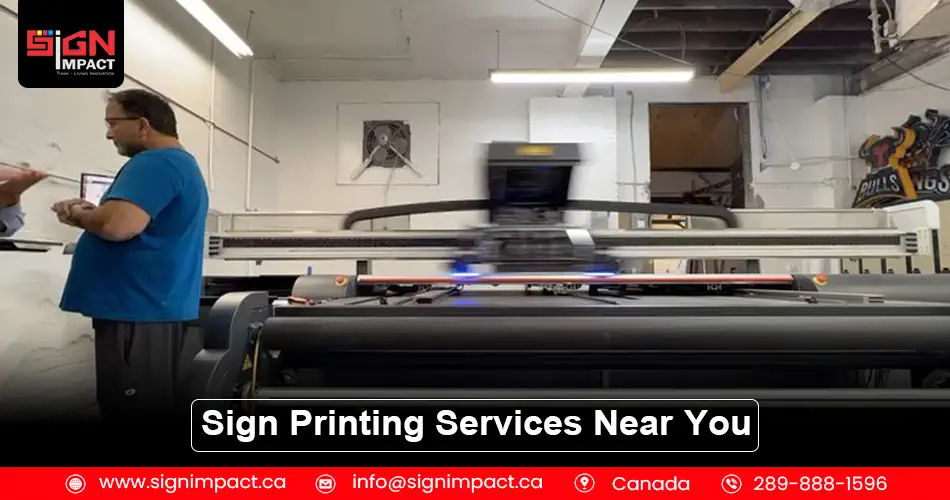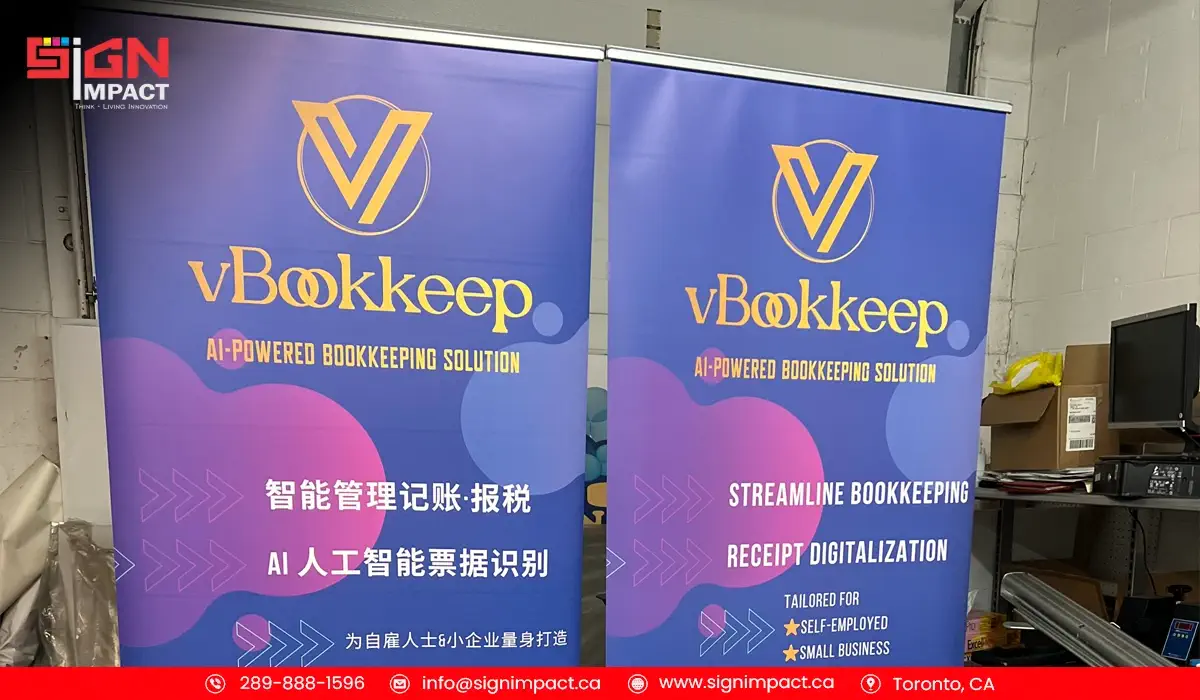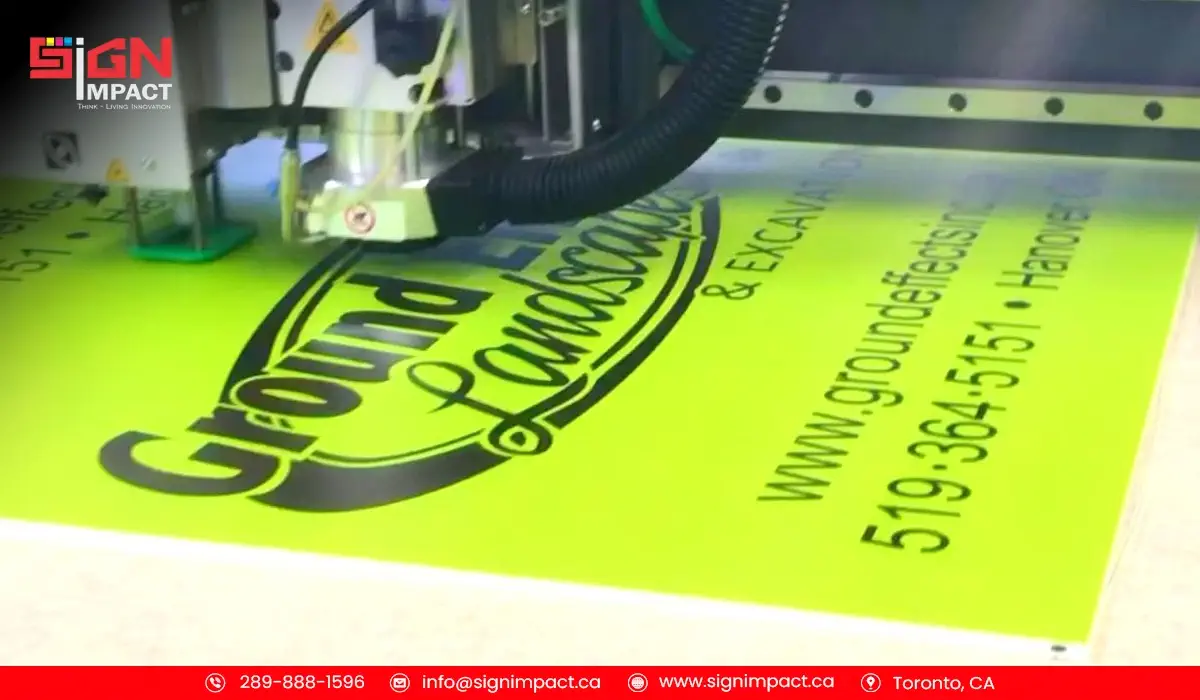Are you in need of pleasing and extraordinary symptoms for your business or occasion? Look no further! Sign printing offerings near you provide a handy and green answer for all your signage needs. From door banners to indoor posters, these services offer various options to assist in promoting your logo and attracting customers.
In this blog post, we can explore the advantages of utilizing signal printing services and the ways we can help raise your business’s advertising efforts.
Choose the Right Sign Printing Service Near You
With regards to selecting an excellent sign printing service, fines have to be the top priority. A sneak peek into their portfolio and consumer testimonials will give you a perception of their caliber. Look out for their ability to deliver diverse sign types, be they outdoor, indoor, or occasion signage. Gauge their customer support ethos and the velocity at which they perform.
While comparing expenses is critical, never allow it to overshadow the significance of the fine. A green sign printing carrier is not approximately affordable, but it is about creating strong funding for your brand.
Understanding The Different Types of Signs
Let’s dive into the various flavors of sign printing types available to you. These are the large, ambitious, and exquisite signs and symptoms that everybody can see, properly obtainable within the open. We shout out your message to the world and feature the power to attract clients like bees to honey.
1. Indoor Signs
Indoor signs consist of wall decals, window snapshots, and point-of-purchase (pop) presentations. These signs play an equally vital function in conveying your business’s personality and values to clients after they’re on your premises.
2. Custom Signs
A custom sign enables you to leave an enduring impact. Those gadgets can be anything from t-shirts to mugs to tote bags, all emblazoned with your employer’s brand or slogan.
3. Outdoor Signs
Outdoor signs serve diverse purposes and are available in different types based totally on their intended function. It prints billboard signs, monument signs, wayfinding signs, real estate signs, yard signs, outside signs, etc.
4. Business and Retail Signs
Business and retail signs are essential for attracting clients, conveying data, and promoting services or products. It additionally includes storefront signs, window signs, frame signs, banners, and outside signs.
Choosing The Right Sign Printing Material
Choosing the proper signage fabric is essential for developing a visually attractive and sturdy signal that efficiently communicates your message. Different substances provide various characteristics, including durability, visibility, and value. Here are some common sign printing materials and their capabilities:
1. Vinyl Banners
· Features:
Versatile, long-lasting, climate-resistant, and appropriate for both indoor and outdoor use. Available in various colors and finishes, including matte and smooth.
· Common Uses:
Banners, decals, window snapshots, vehicle wraps, and out-of-door signage.
2. Corrugated plastic
· Features:
Lightweight, price-effective, and sturdy. Resistant to water and most chemicals. Perfect for quick-time periods outside use.
· Common Uses:
Backyard signs and symptoms, brief out-of-door signage, and event signage.
3. Acrylic Signs
· Features:
Obvious, durable, and has a high-give-up look. It may be used for indoor and outdoor signage. Immune to yellowing.
· Common Uses:
Indoor signs and symptoms, directional symptoms, and decorative signage.
4. Metal Signs
· Features:
Bendy, easily detachable, and reusable. Generally used for transient signage on metal surfaces.
· Common Uses:
Automobile magnets, brief symptoms.
While choosing a sign printing material, keep in mind factors including the intended use, durability necessities, price range, and the visible impact you need to achieve. It’s also important to work with a good printer or sign company to ensure proper printing and finishing strategies for the selected cloth.
Design and Customization Options
Design and customization options play a crucial role in creating particular and powerful signs. Depending on the kind of sign and its supposed motive, various design factors and customization options can be taken into consideration. Right here are some key components to discover while designing and customizing signs:
1. Typography
- Choose suitable fonts that align with your emblem or message.
- Recall clarity from a distance, especially for symptoms that are out of doors.
- Test with font patterns, sizes, and spacing to create visible interest.
2. Color Scheme
- Pick out hues that mirror your emblem identification or deliver the supposed message.
- Make sure the assessment is correct for clarity, especially among text and history.
- Use color psychology to rouse unique feelings or associations.
3. Logo Integration
- Include your business or logo emblem for logo reputation.
- Make certain the logo is accurately sized and positioned for visibility.
4. Imagery
- Use exquisite snapshots and portraits to decorate the message.
- Remember the overall theme and tone of your signal.
- Custom illustrations or icons can add a unique touch.
5. Size and Layout:
- Determine the appropriate size primarily based on the viewing distance and place.
- Establish a clear hierarchy for data, with key details being extra distinguished.
- Balance textual content and visuals for an aesthetically pleasing layout.
6. Fabric Choice
- Select substances that align with the signal’s cause and surroundings.
- Discover textures, finishes, and coatings for added visible attraction.
- Bear in mind the sturdiness and longevity of outdoor signs.
7. Form and Structure:
- Experiment with particular shapes or structures that stand out.
- Make certain the design enhances the physical characteristics of the gap.
8. Lighting Options
- Explore backlighting or LED alternatives for visibility in low-mild conditions.
- Use lighting to focus on specific factors or create a focal point.
9. Interactive Elements:
- Incorporate QR codes, NFC tags, or different interactive functions for engagement.
- Keep in mind touchscreens or digital displays for dynamic content.
10. Texture and Dimension
- Add texture or measurement to the design for a tactile experience.
- Raised lettering, embossing, or layered materials can create a visual hobby.
11. Comparison and Legibility
- Make sure there is enough assessment among text and heritage for clean readability.
- Check the legibility of various lighting fixture conditions.
12. Personalization
- Customize symptoms for particular events, promotions, or seasons.
- Keep in mind variable statistical printing for personalized messages or offers.
Operating with skilled photograph designers or sign experts can help convey your imaginative and prescient existence and ensure that the very last product meets each aesthetic and functional requirement. Moreover, looking for remarks from your target market can offer precious insights into the effectiveness of your design. Contact us at Signimpact to learn more about signs.




